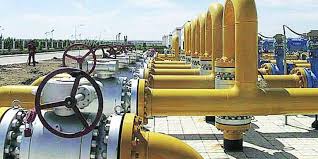NEW DELHI: CNG and PNG will become costlier and input cost for fertiliser manufacturers will rise sharply as prices of natural gas produced from domestic fields will spike 50% to record levels if the government decides to carry out the scheduled revision on October 1 in spite of a committee reviewing the pricing formula to moderate consumer rates.
The impact of spike in global gas prices following the Russia-Ukraine conflict would push up the price of gas from legacy fields of ONGC and Oil India from $6.1 per unit to all-time high of $9 per unit (million British thermal unit). The price of gas from technologically challenging fields, which also enjoy marketing freedom, will spike from $9.9 per unit to $12 per unit.
Global spot market rates had shot up to $65 per unit, 4-5 times the normal, soon after the conflict. The surge coincides with the period that will be considered under the pricing formula. The prices have slipped into the $40s as a result of the recent drop in oil prices, which will reflect only after six months if the formula remains unchanged.
India depends on imported gas to meet about 50% of its demand. Hence the 2014 formula was benchmarked to a six monthly rolling average of rates in major markets such as the US, Canada and the FSU (former Soviet Union) countries. All of them are gas surplus markets.
Read More: How to optimise your medical insurance plans
Domestic gas is mostly used for CNG and PNG services as well as fertiliser units. A minuscule quantity is used for power generation. So these are the users that will be hit the hardest.
Costlier gas will squeeze the margins of CNG and PNG operators. The rupee’s fall will further harden the pinch. Rising prices of gas, the main input, has put CNG operators into a piquant situation due to the long freeze on petrol and diesel prices as they are loathe at passing on the entire price burden for fear of losing new customers as the advantage over liquid fuels shrinks. This can upset the economics of an estimated Rs 80,000 crore investment being made to roll out city gas projects in 400 districts in the country.





































